Cerebras Second-Gen Wafer Scale Chip: 2.6 Trillion 7nm Transistors, 850,000 Cores, 15kW of Power
The world's largest chip
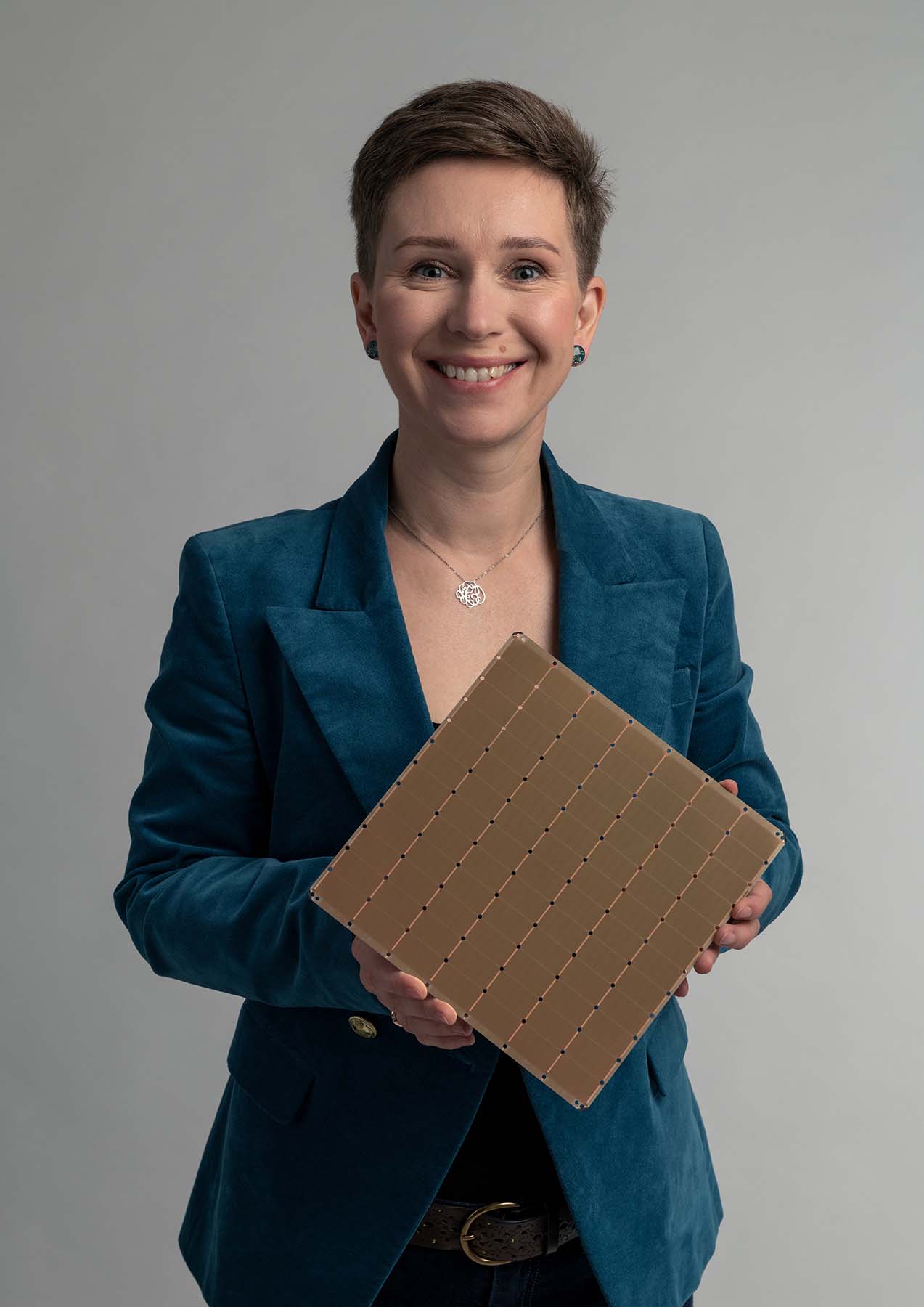

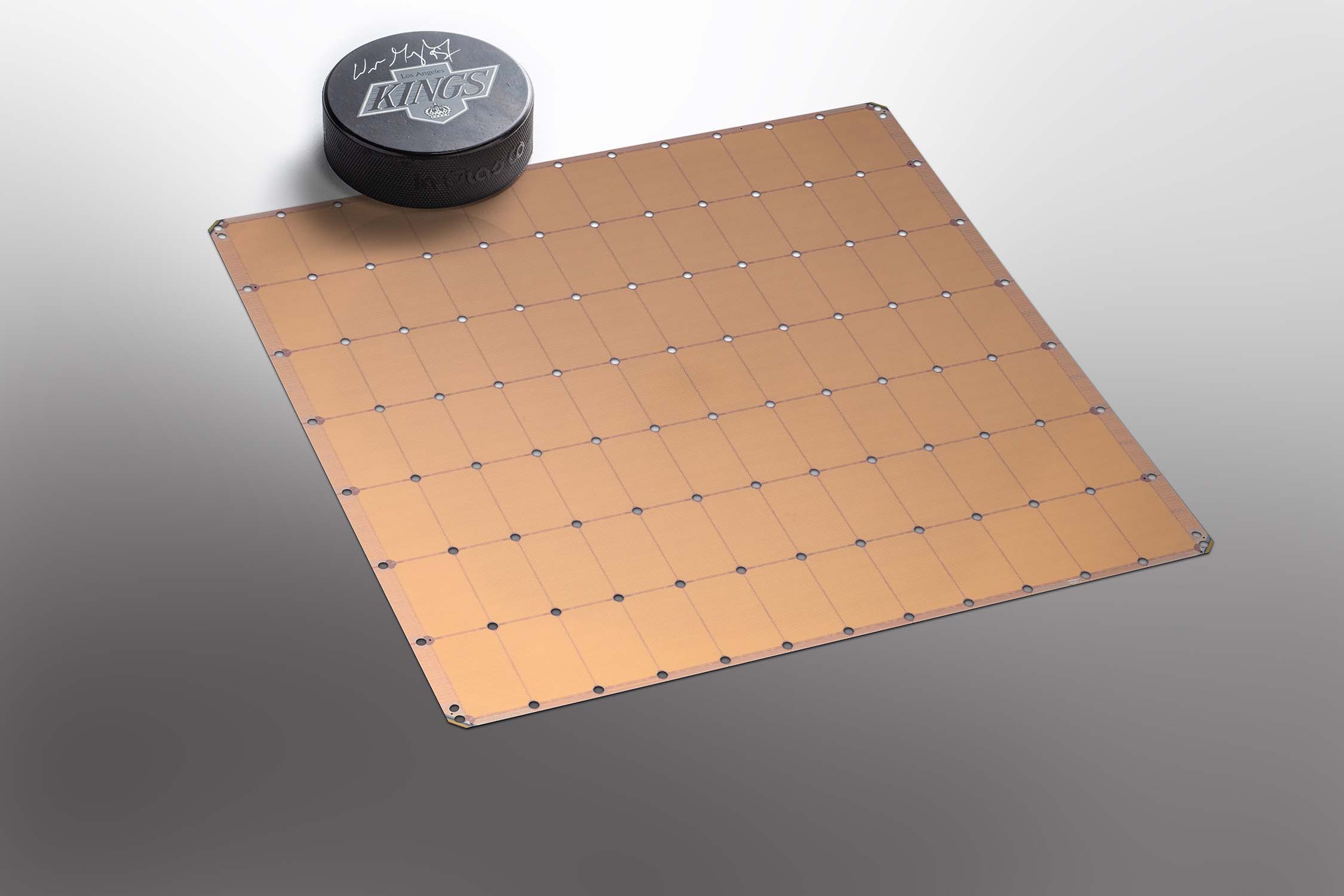


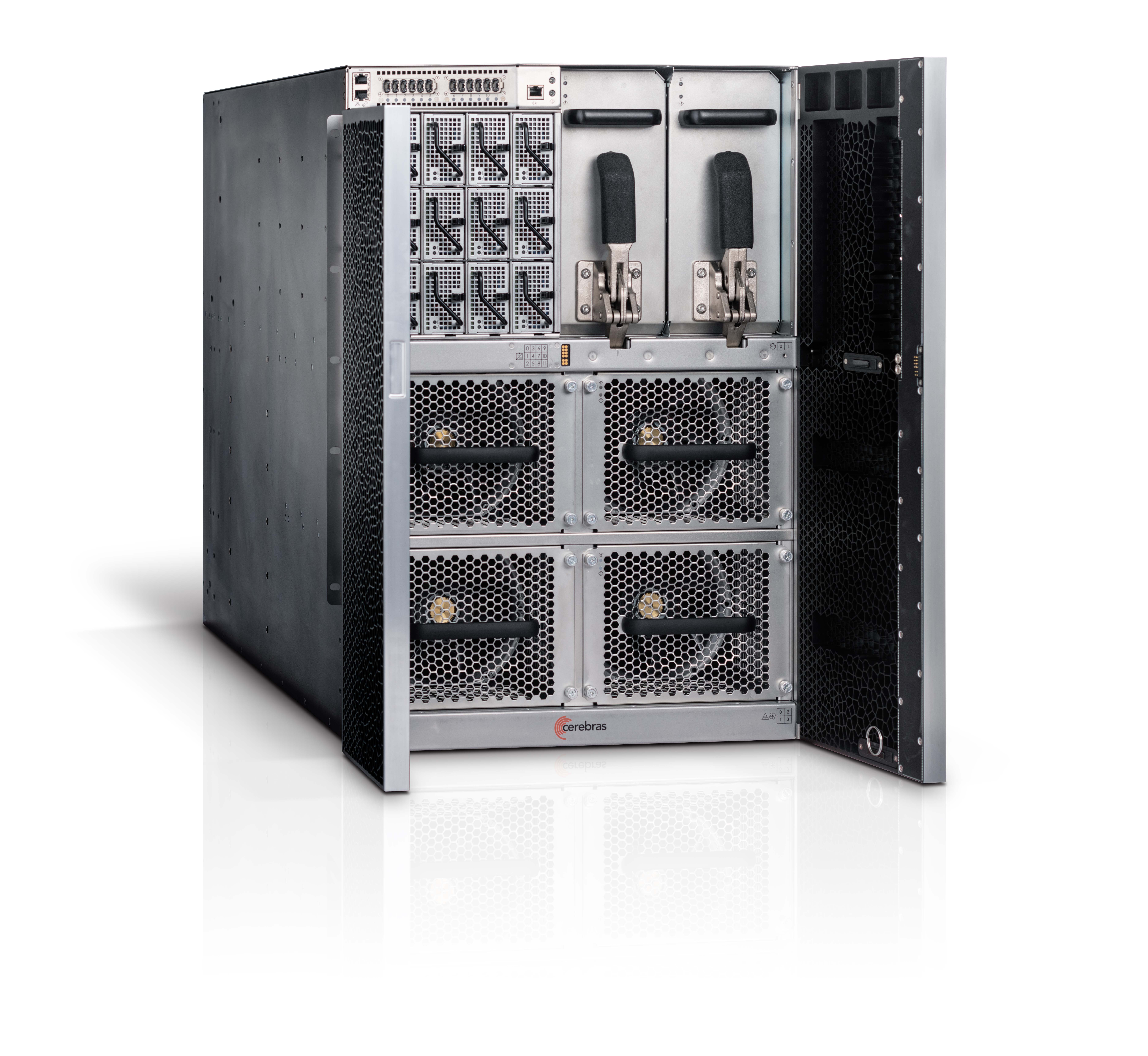
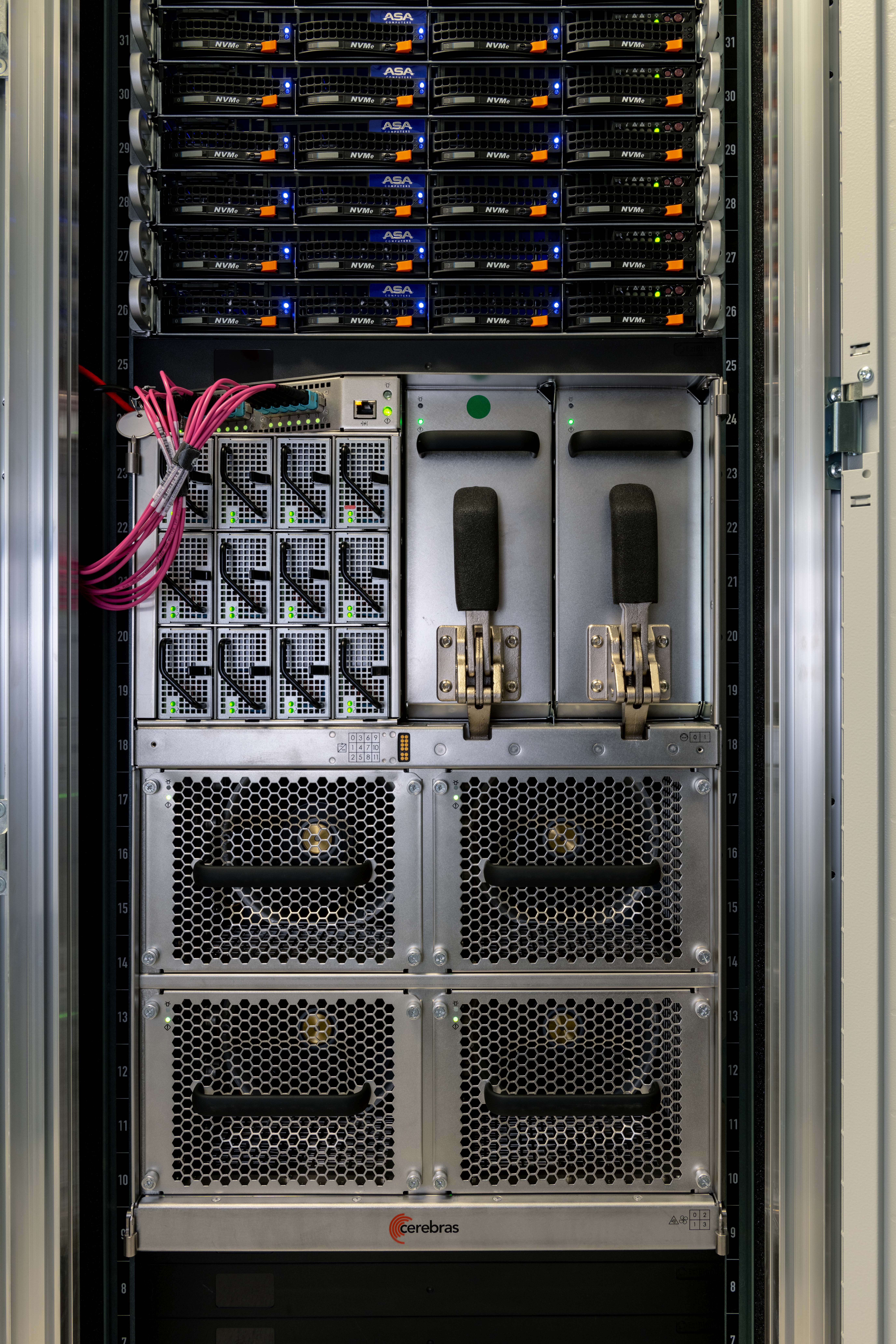
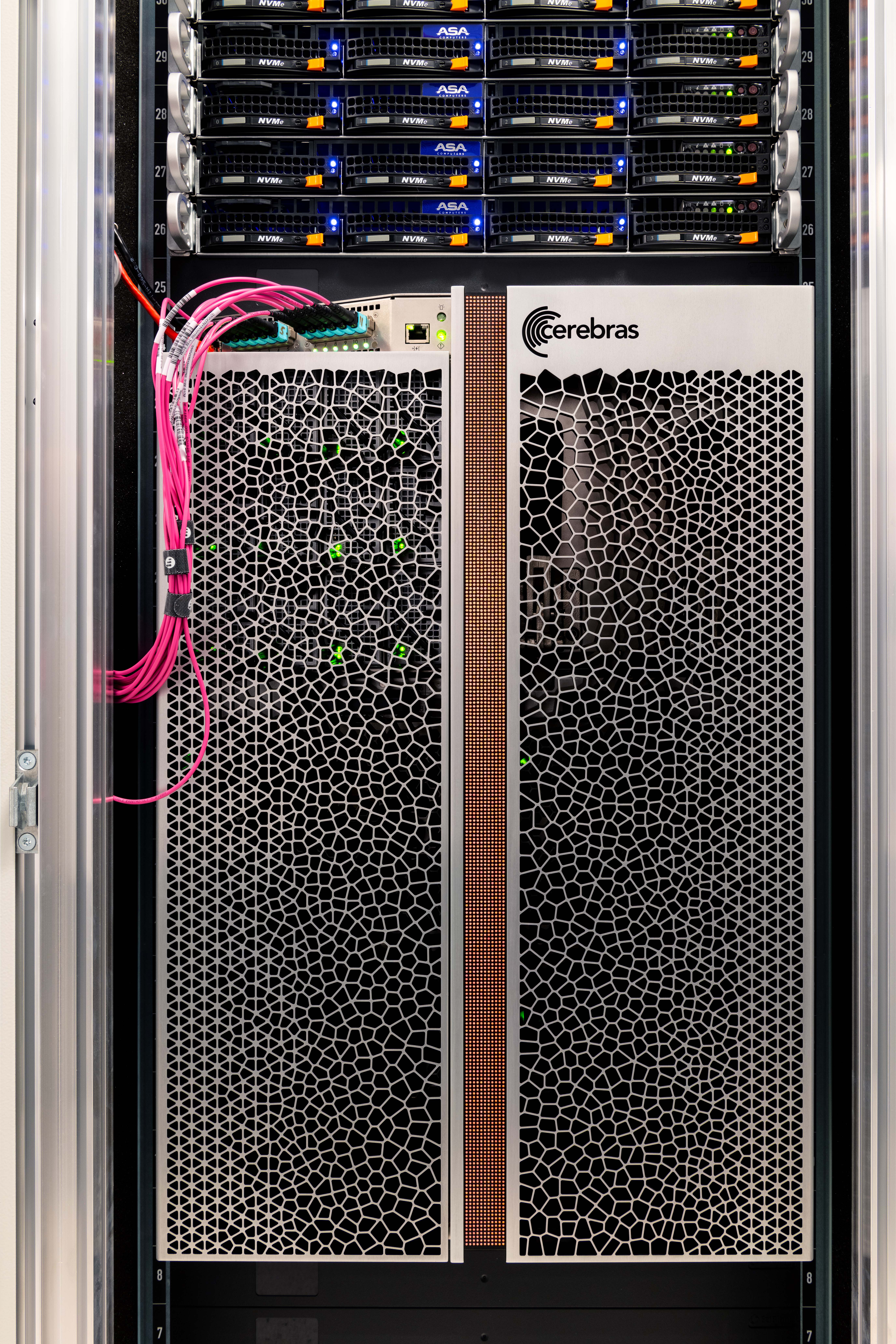
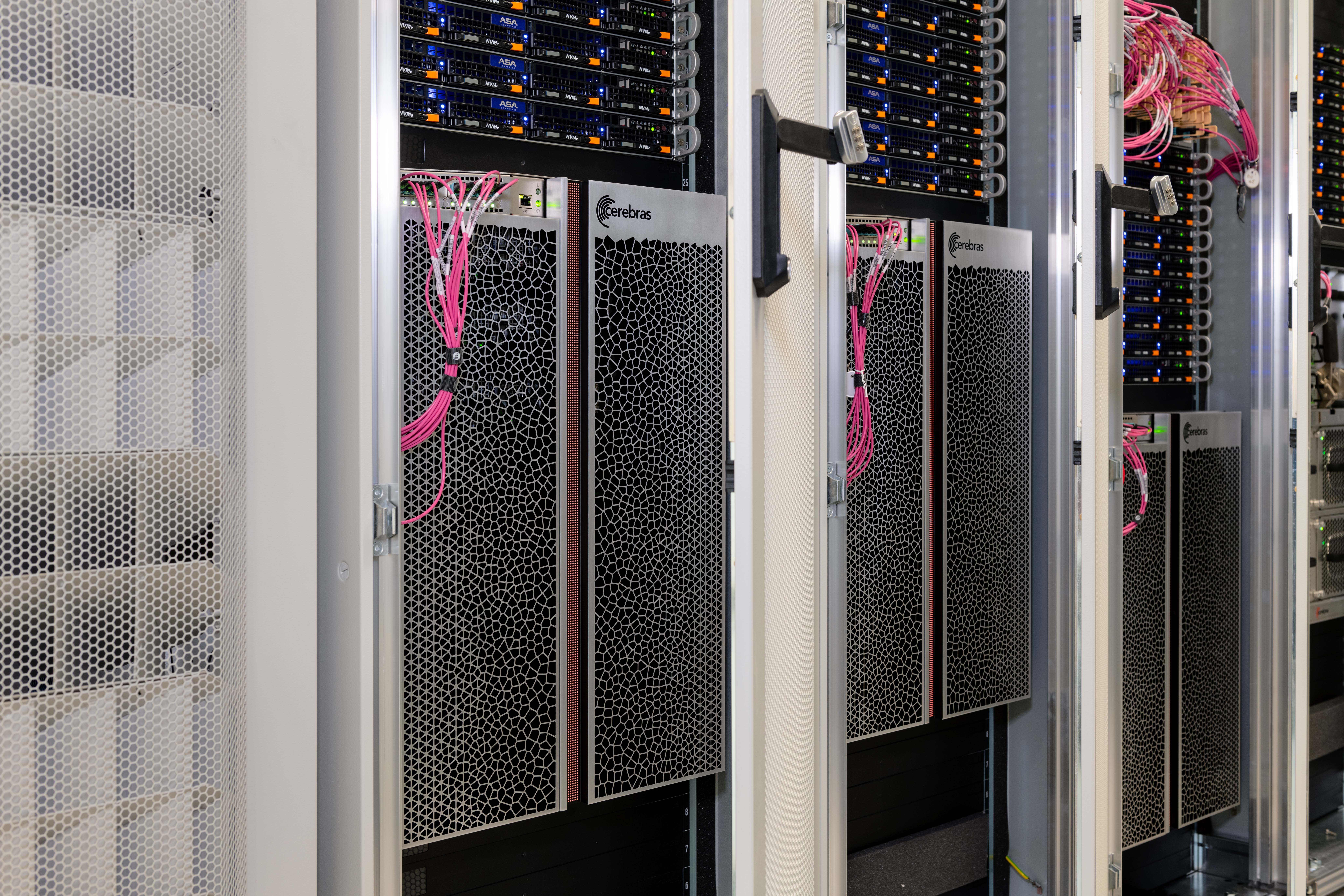

Cerebras, the company behind the Wafer Scale Engine (WSE), the world's largest single processor, shared more details about its latest WSE-2 today at the Linley Spring Processor Conference. The new WSE-2 is a 7nm update to the original Cerebras chip and is designed to tackle AI workloads with 850,000 cores at its disposal. Cerebras claims that this chip, which comes in an incredibly small 26-inch tall unit, replaces clusters of hundreds or even thousands of GPUs spread across dozens of server racks that use hundreds of kilowatts of power.
The new WSE-2 now wields 850,000 AI-optimized cores spread out over 46,225 mm2 of silicon packed with 2.6 trillion transistors. Cerebras also revealed today that the second-gen chip has 40 GB of on-chip SRAM memory, 20 petabytes of memory bandwidth, and 220 petabits of aggregate fabric bandwidth. The company also revealed that the chip consumes the same 15kW of power as its predecessor but provides twice the performance, which is the benefit of moving to the denser 7nm node from the 16nm used with the previous-gen chip.
Cerebras Wafer Scale Engine 2 WSE-2 Specifications
| Row 0 - Cell 0 | Cerebras Wafer Scale Engine 2 | Cerebras Wafer Scale Engine | Nvidia A100 |
| Process Node | TSMC 7nm | TSMC 16nm | TSMC 7nm N7 |
| AI Cores | 850,000 | 400,000 | 6,912 + 432 |
| Die Size | 46,255 mm2 | 46,255 mm2 | 826 mm2 |
| Transistors | 2.6 Trillion | 1.2 Trillion | 54 Billion |
| On-Chip SRAM Memory | 40 GB | 18 GB | 40 MB |
| Memory Bandwidth | 20 PB/s | 9 PB/s | 1,555 GB/s |
| Fabric Bandwidth | 220 Pb/s | 100 Pb/s | 600 GB/s |
| Power Consumption (System/Chip) | 20kW / 15kW | 20kW / 15kW | 250W (PCIe) / 400W (SXM) |
These almost unbelievable specifications stem from the fact that the company uses an entire TSMC 7nm wafer to construct one large chip, thus sidestepping the typical reticle limitations of modern chip manufacturing to create a wafer-sized processor. The company builds in redundant cores directly into the hardware, which then leaves room for disabling defective cores, to sidestep the impact of defects during the manufacturing process.
The company accomplishes this feat by stitching together the dies on the wafer with a communication fabric, thus allowing it to work as one large cohesive unit. This fabric provides 220 Petabits/S of throughput for the WSE2, which is slightly more than twice the 100 Petabits/S of the first-gen model. The wafer also includes 40GB of on-chip memory that provides up to 20 Petabytes/S of throughput, both of which are also more than twice that of the previous-gen WSE.
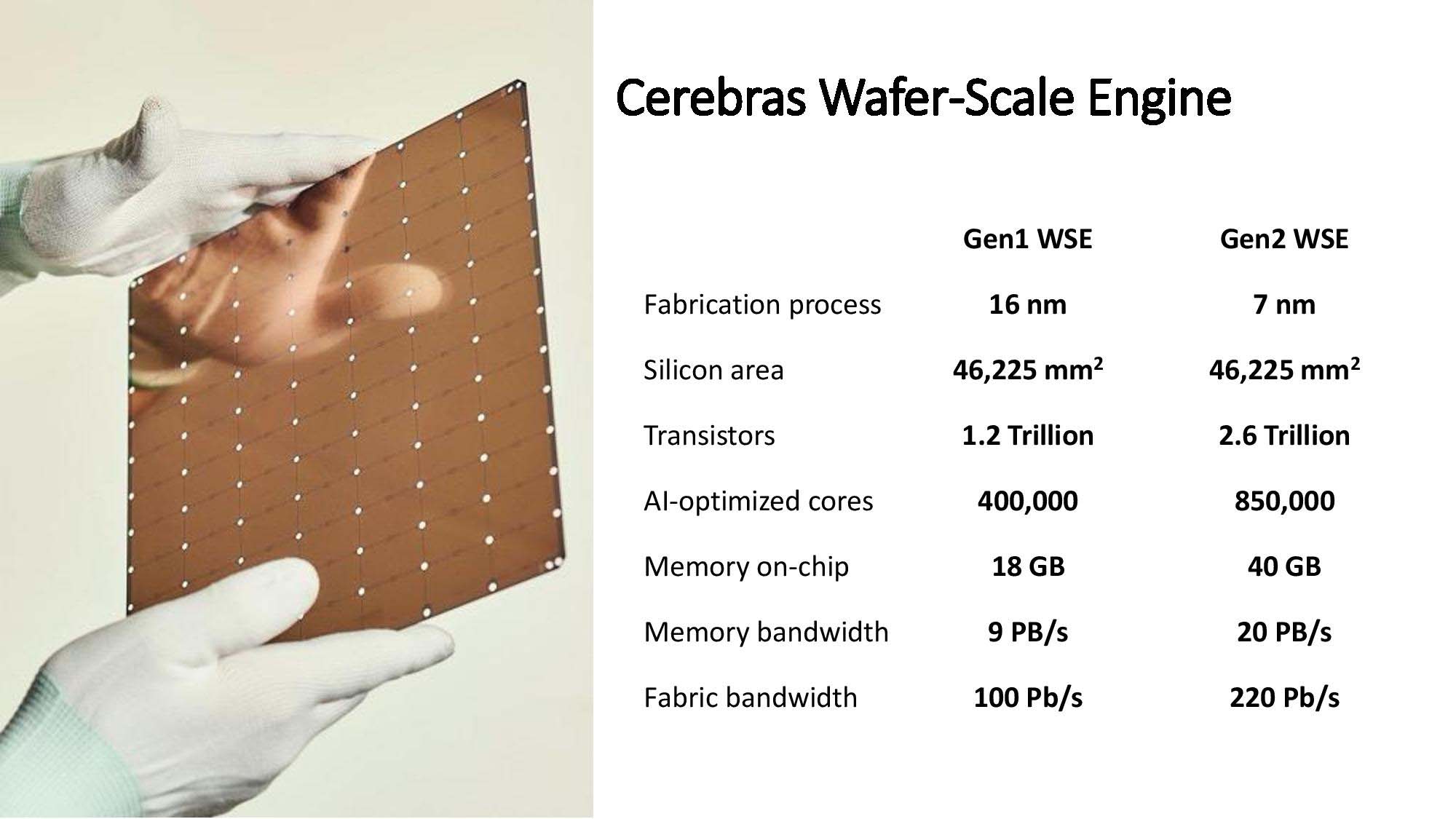
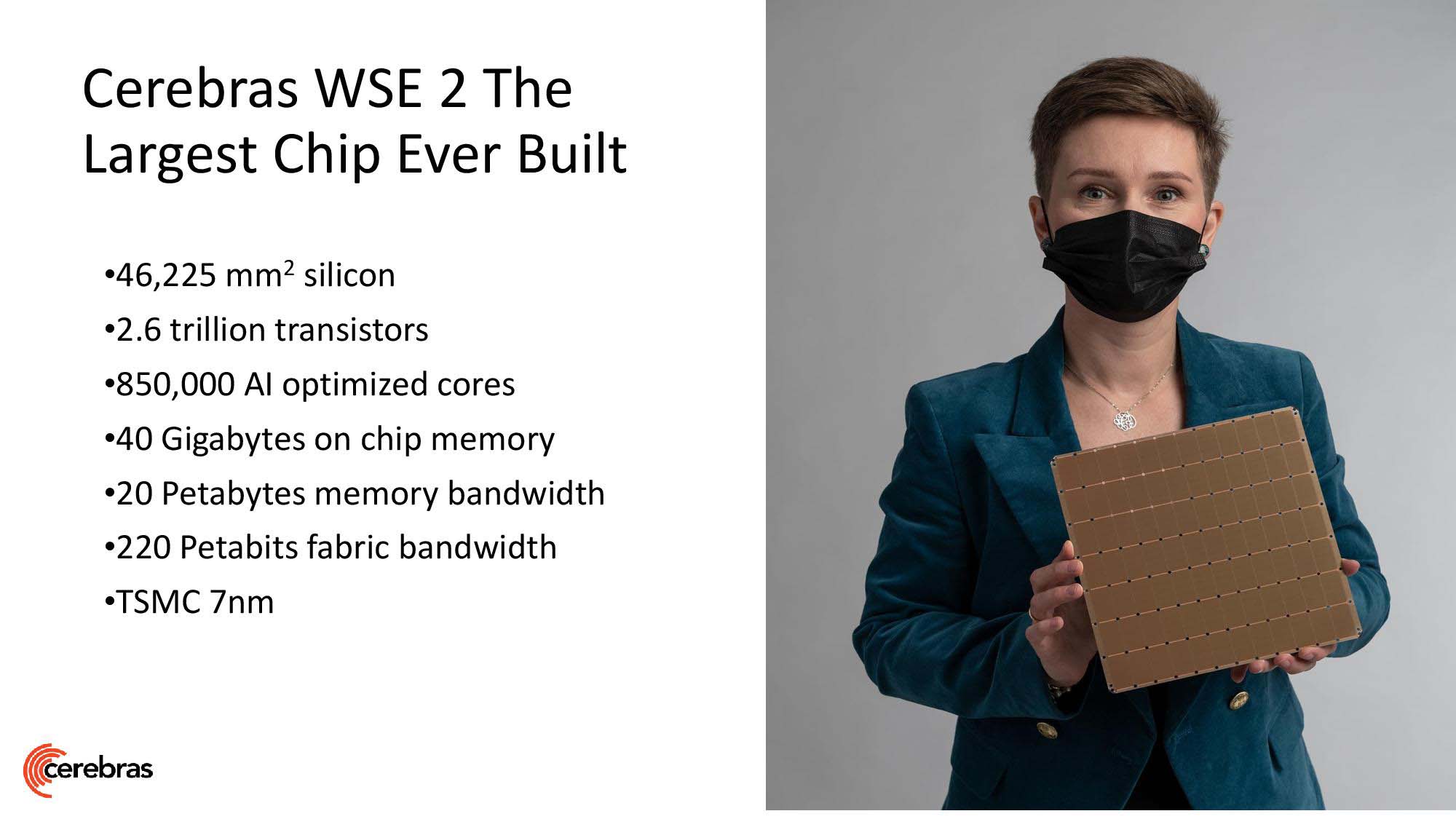
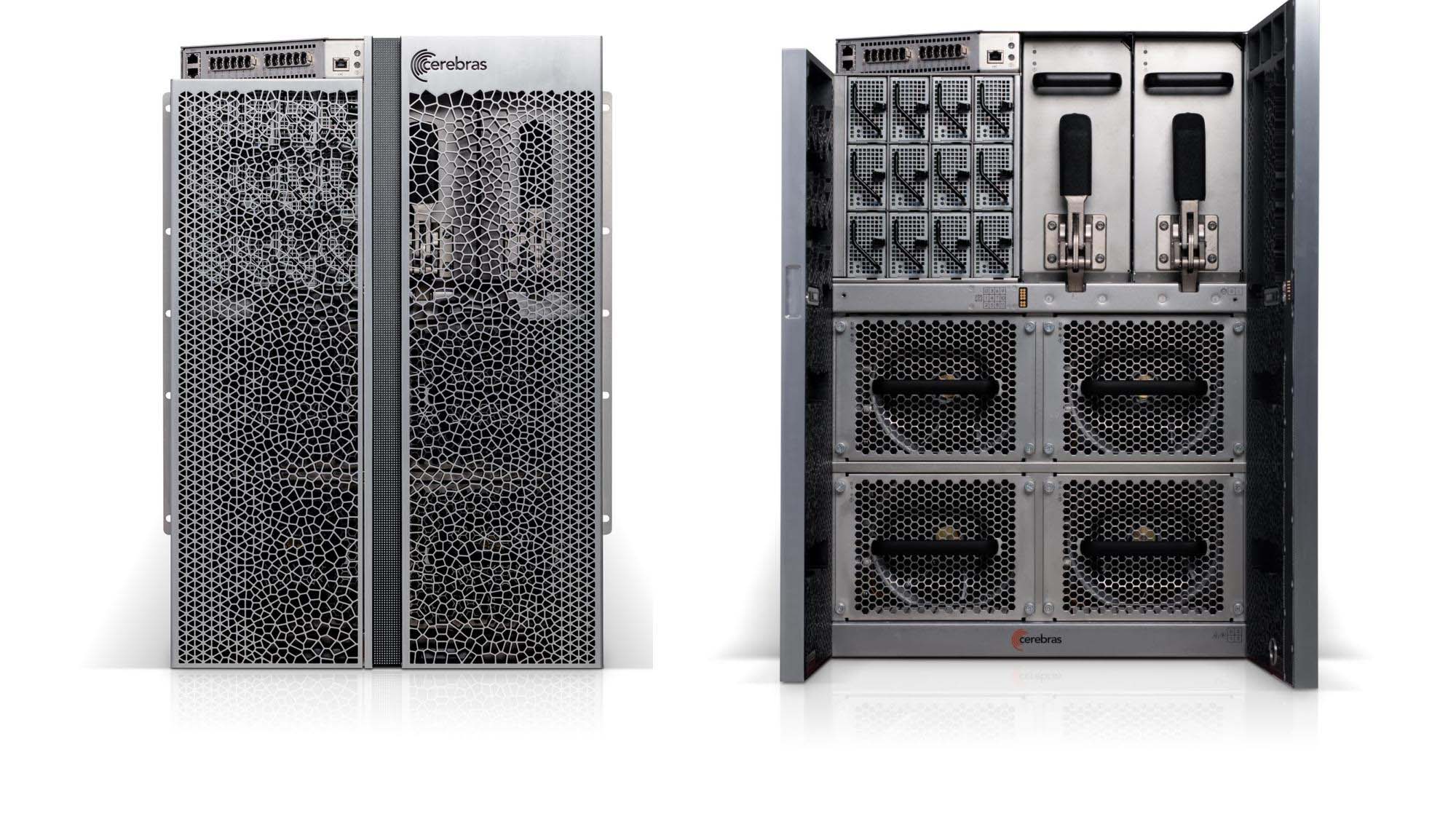
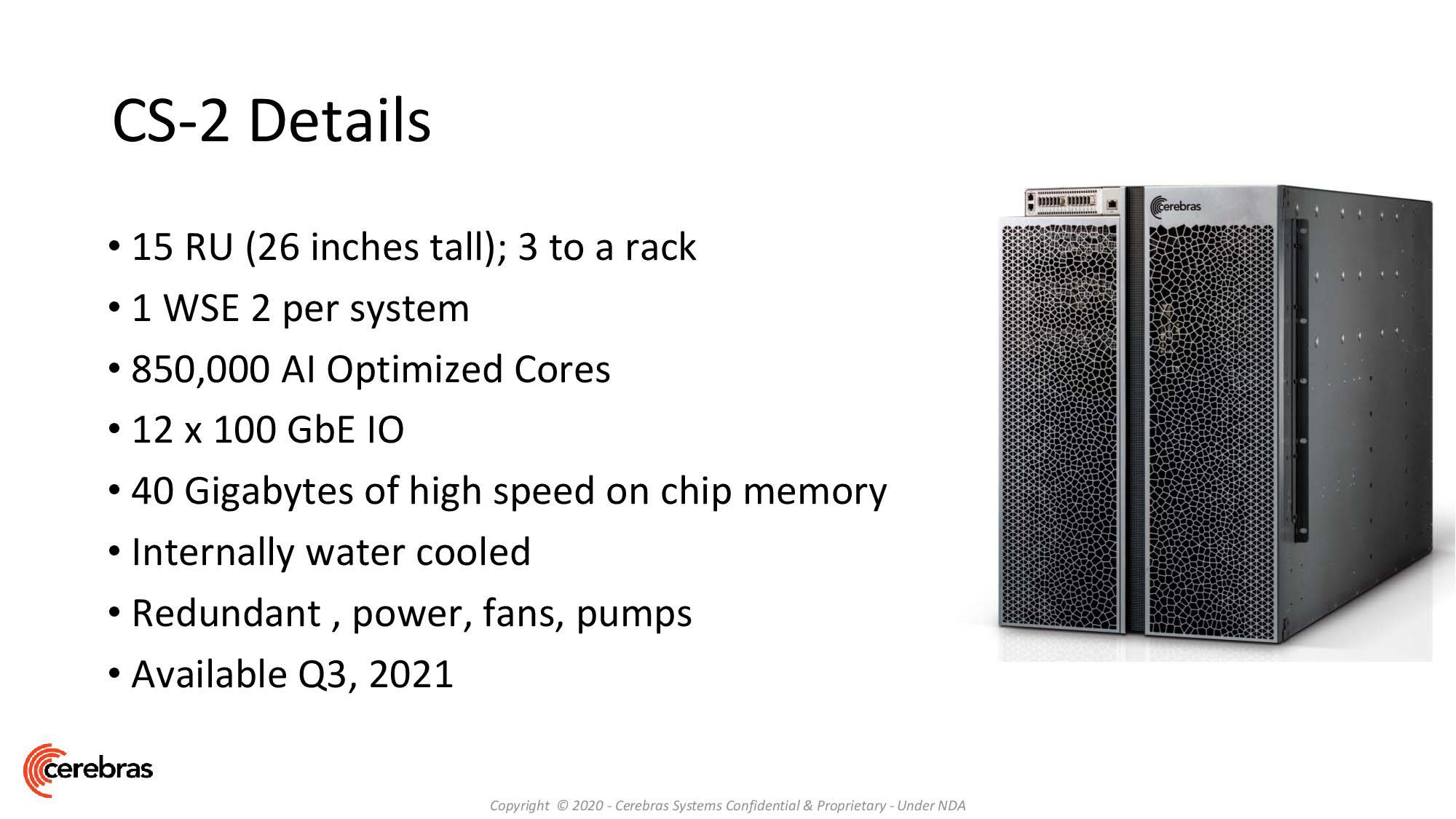

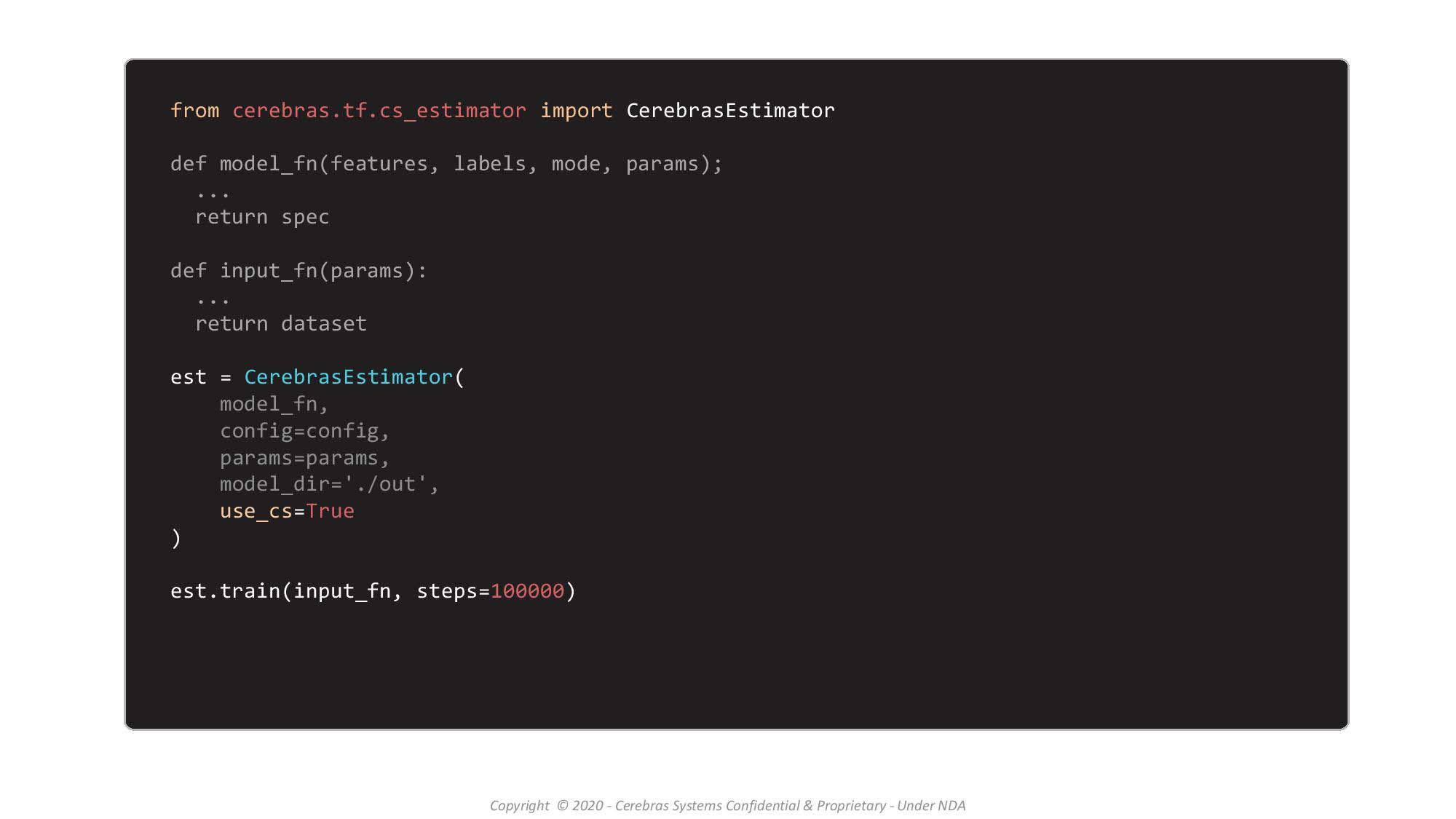
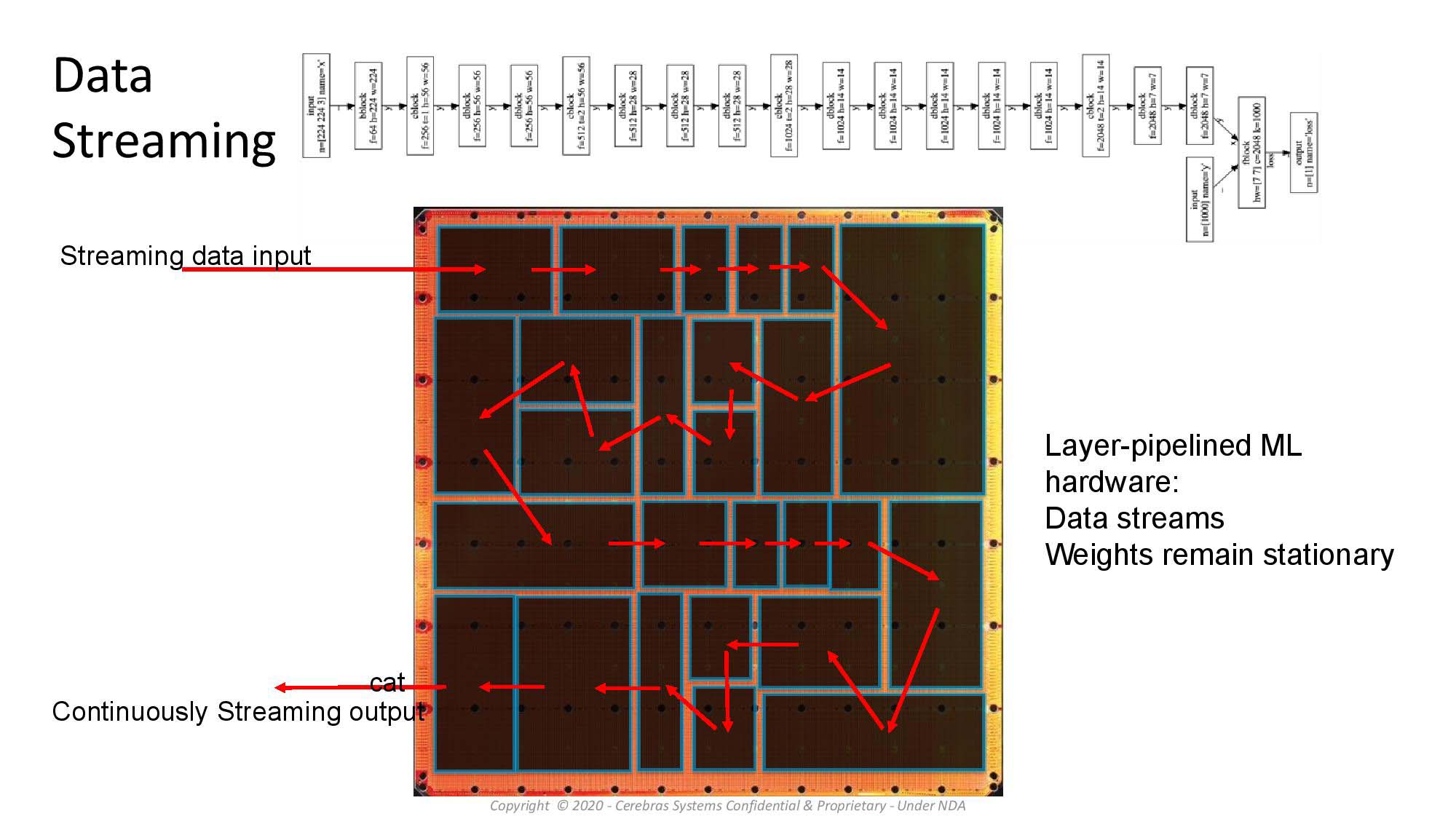
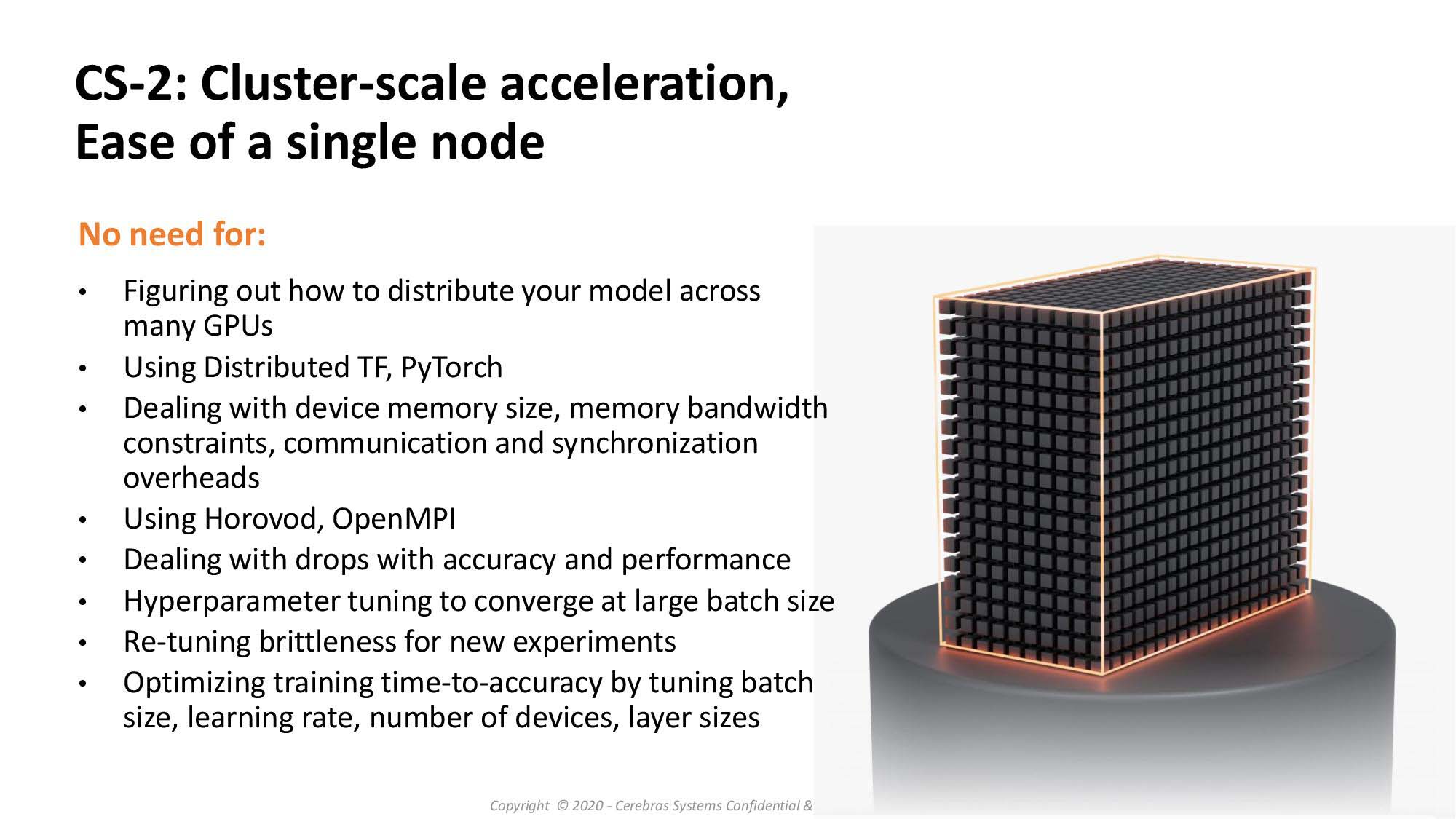
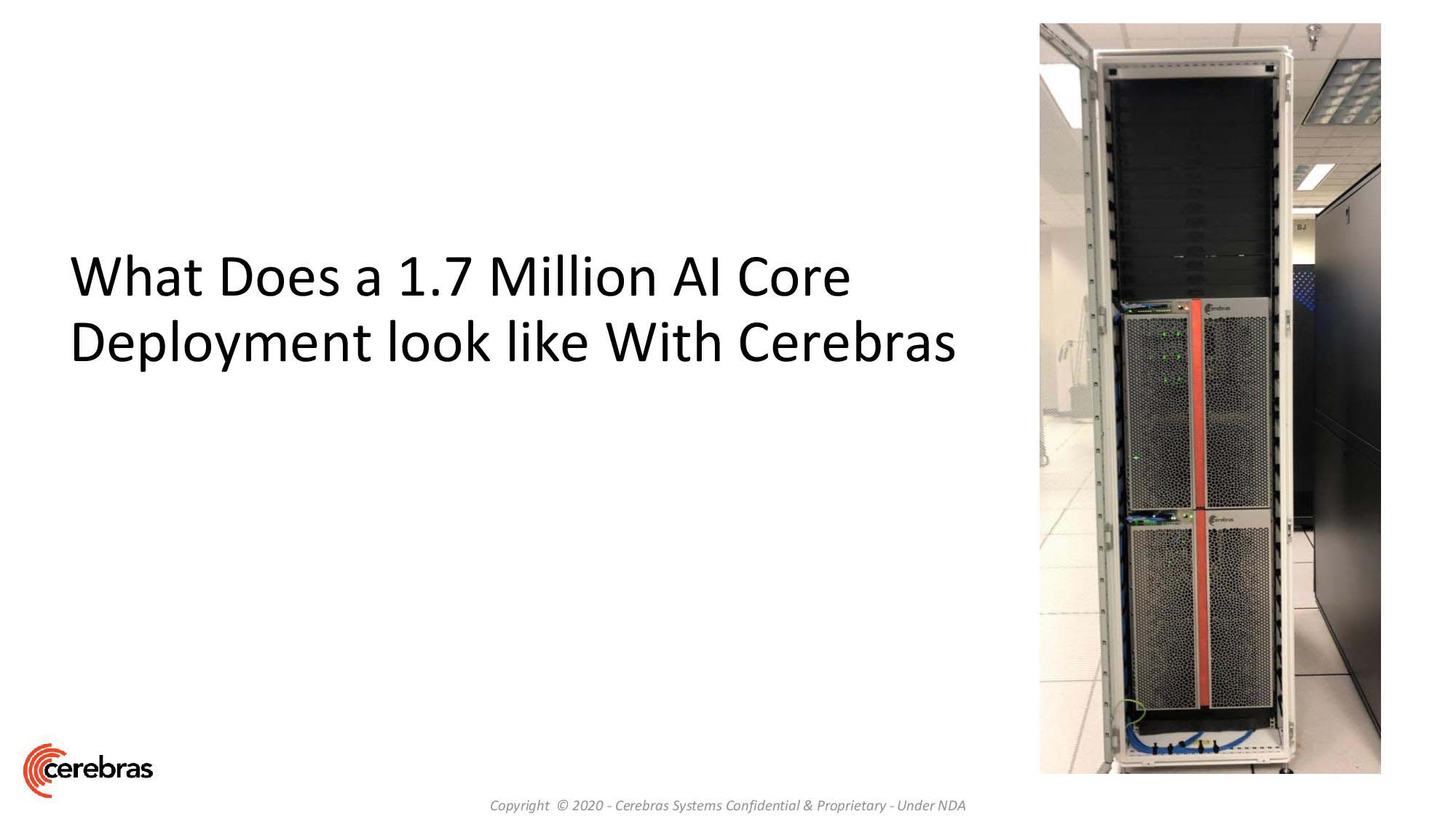
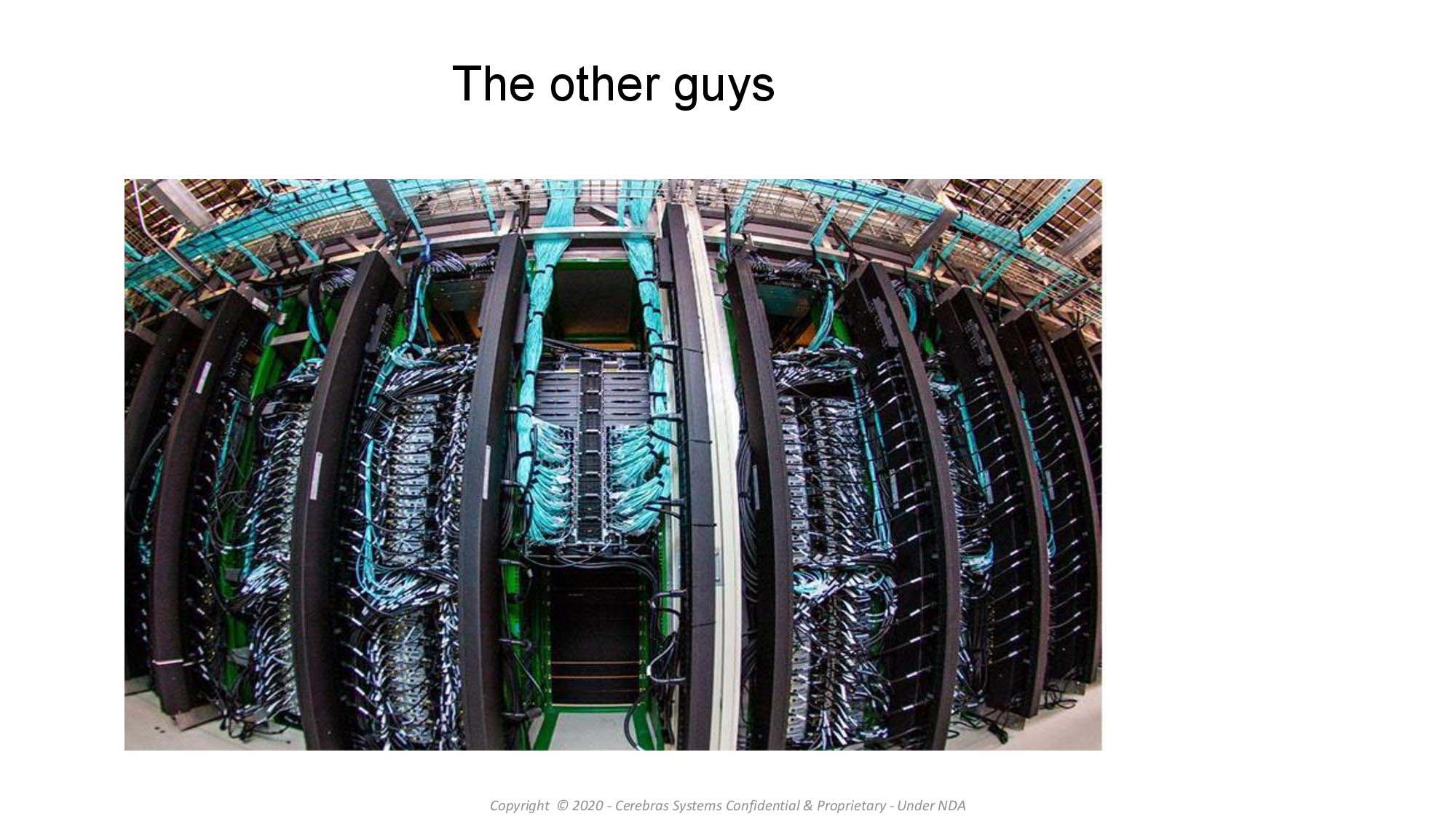
Cerebras hasn't specified the WSE-2's clock speeds, but has told us in the past that the first-gen WSE doesn't run at a very "aggressive" clock (which the company defined as a range from 2.5GHz to 3GHz). We're now told that the WSE-2 runs at the same clock speeds as the first-gen model, but provides twice the performance within the same power envelope due to its increased system resources. We certainly don't see those types of generational performance improvements with CPUs, GPUs, or most accelerators. Cerebras says that it has made unspecified changes to the microarchitecture to extract more performance, too.
As you can see below, cores are distributed into tiles, with each tile having its own router, SRAM memory, FMAC datapath, and tensor control. All cores are connected via a 2D mesh low-latency fabric. The company claims these optimizations result in a 2x improvement in wall clock training time with a BERT-style network training that was completed using the same code and compiler used with the first-gen wafer-scale chip.
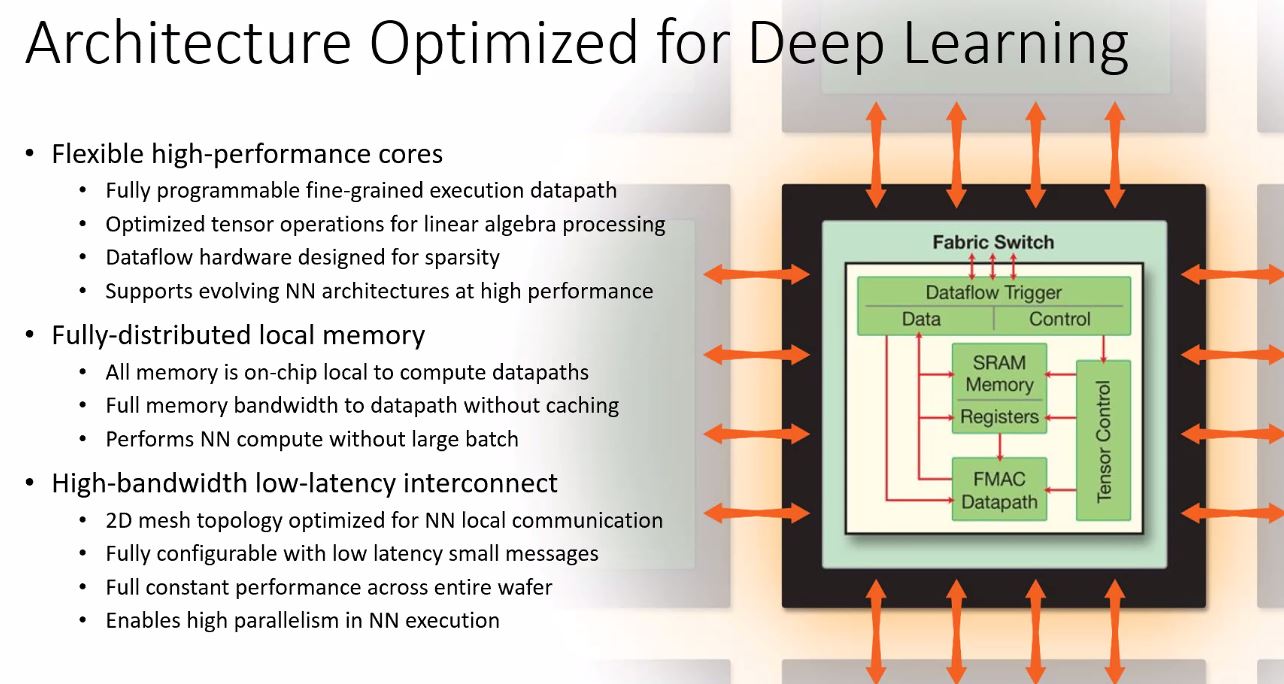
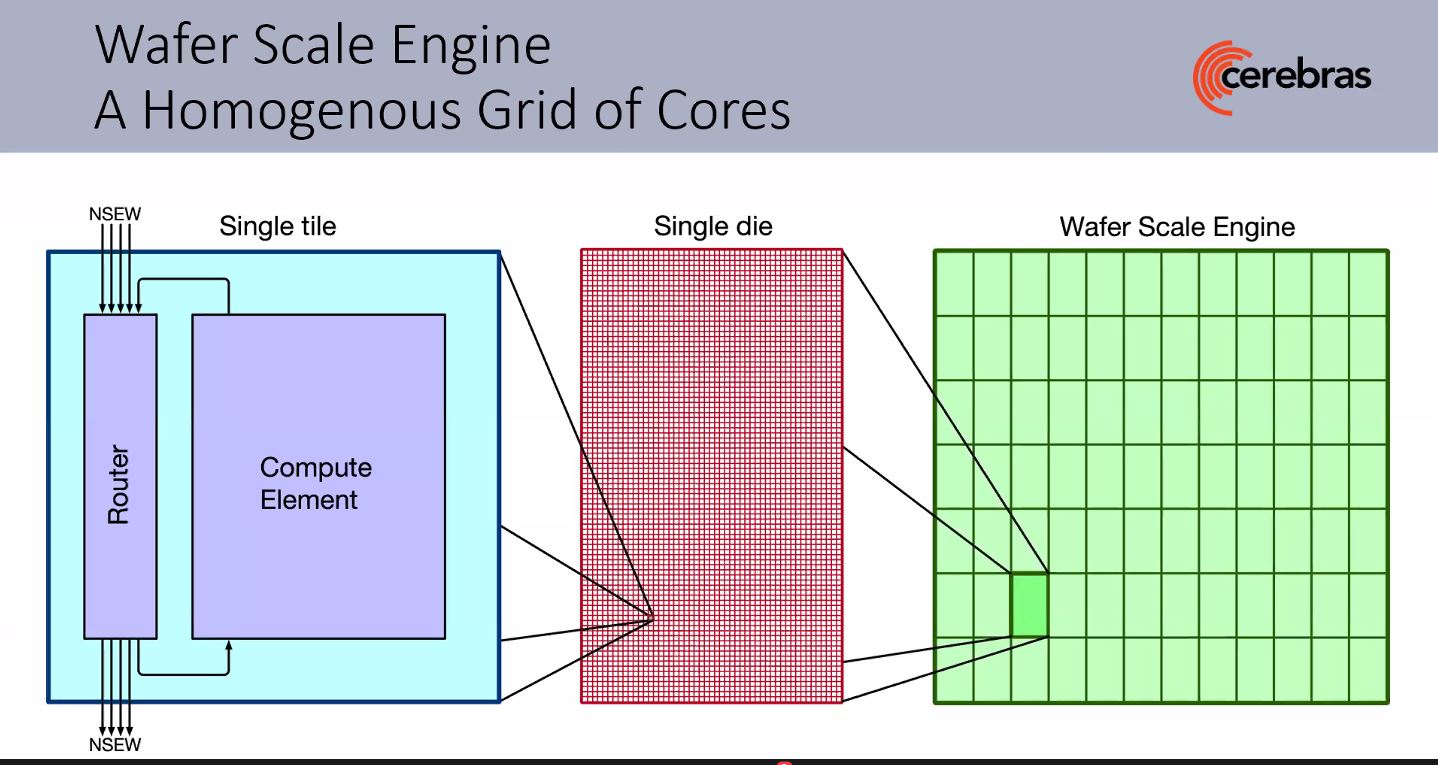
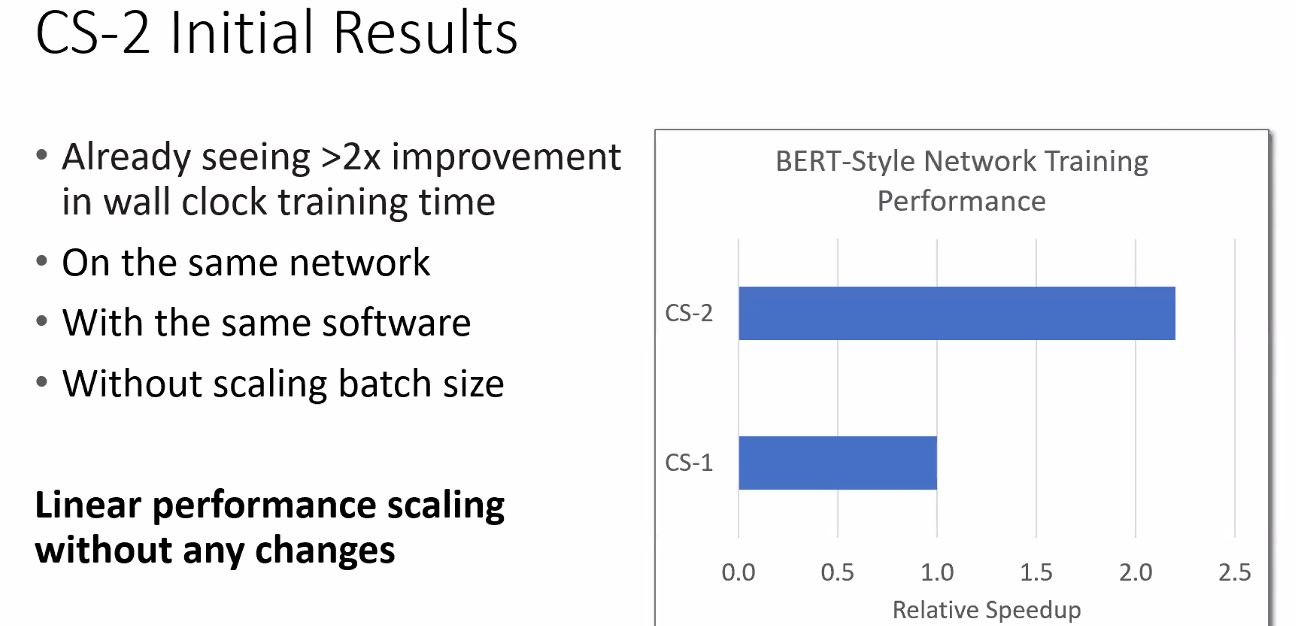
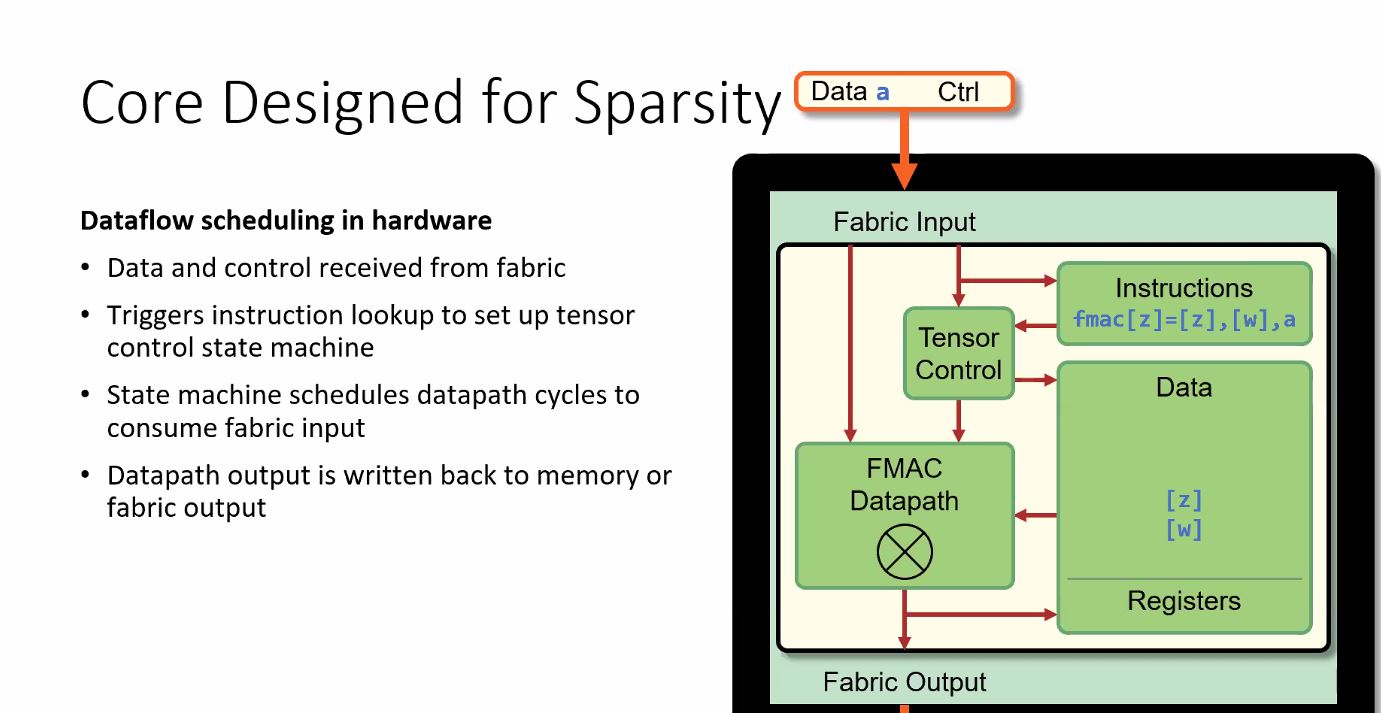
As before, the chip comes wrapped in a specialized 15U system that's designed specifically to accommodate the unique characteristics of the wafer-scale device. We're told that the changes to the first-gen CS-1 system, which you can read about in-depth here, are very minimal in the new CS-2 variant. Given that the most important metrics, like power consumption and the size of the WSE, have remained the same, it makes sense that most of the system is identical.
Cerebras hasn't specified pricing, but we expect the WSE-2 unit will continue to attract attention from the military and intelligence communities for any multitude of purposes, including nuclear modeling, but Cerebras can't divulge several of its customers (for obvious reasons). It's safe to assume they are the types with nearly unlimited budgets, so pricing isn't a concern. On the public-facing side, the Argonne National Laboratory is using the first systems for cancer research and basic science, like studying black holes.
Cerebras also notes that its compiler easily scaled to exploit twice the computational power, so the software ecosystem that is already in place is supported. As such, the WSE-2 unit can accept standard PyTorch and TensorFlow code that is easily modified with the company's software tools and APIs. The company also allows customers instruction-level access to the silicon, which stands in contrast to GPU vendors.
Cerebras has working systems already in service now, and general availability of the WSE-2 is slated for the third quarter of 2021.
Get Tom's Hardware's best news and in-depth reviews, straight to your inbox.

Paul Alcorn is the Editor-in-Chief for Tom's Hardware US. He also writes news and reviews on CPUs, storage, and enterprise hardware.
-
TheBeastFromOz Replyspread out over 46,225 mm² of silicon (roughly 12x12 in.)
Someone needs to learn to use a calculator, the square root of 46,225 is 215mm or about 8.5x8.5 inches, not even close to 12 x 12. 12 x 12 (approx 305 x 305mm) would be 93,025mm², more than double the quoted figure. -
razor512 I wonder if they can bring wafer scale chip designs to the consumer market for GPUs. Imagine taking scaling a modern GPU up to that size. You would be able to maxt out most current games at 1080p or even 1440p without having to rely on upscaling when ray tracing is enabled, or maybe even have a true 4K gaming GPU with ray tracing disabled and no upscaling.Reply -
Krotow Replyrazor512 said:I wonder if they can bring wafer scale chip designs to the consumer market for GPUs. Imagine taking scaling a modern GPU up to that size. You would be able to maxt out most current games at 1080p or even 1440p without having to rely on upscaling when ray tracing is enabled, or maybe even have a true 4K gaming GPU with ray tracing disabled and no upscaling.
And you will be able to smash it in pieces much easier when being lousy :) I'm curious how much this toy will cost. Probably will be worth like a new car. -
jeremyj_83 Reply
Just the wafer cost is over $9k. https://www.tomshardware.com/news/tsmcs-wafer-prices-revealed-300mm-wafer-at-5nm-is-nearly-dollar17000 My guess is something like this will be in the $100's of thousands possibly even into the $1 million range per chip.Krotow said:And you will be able to smash it in pieces much easier when being lousy :) I'm curious how much this toy will cost. Probably will be worth like a new car.
Do you want to have your computer drawing 15kW of power? That would be a nightmare to cool, much less your power bill. An average home uses 28.9kWh per day, that means this uses 1/2 of your average home energy usage every hour. Are you wanting to double or more your average electric bill?razor512 said:I wonder if they can bring wafer scale chip designs to the consumer market for GPUs. Imagine taking scaling a modern GPU up to that size. You would be able to maxt out most current games at 1080p or even 1440p without having to rely on upscaling when ray tracing is enabled, or maybe even have a true 4K gaming GPU with ray tracing disabled and no upscaling. -
gargoylenest the real question here is: Can it farm ethereum? If yes, then it's already unavailable...Reply -
Nantes Replygargoylenest said:the real question here is: Can it farm ethereum? If yes, then it's already unavailable...
Nope, the real question is... can it run Crysis? -
Krotow ReplyNantes said:Nope, the real question is... can it run Crysis?
It indeed will begin energy crisis when they will turn it on. -
Ex BYTE Tech Editor Reply
October 4 1957 Humanity's First Artificial Satellite - World Amazed!Admin said:Cerebras Second-Gen Wafer Scale Chip: 2.6 Trillion 7nm Transistors, 850,000 Cores, 15kW of Power : Read more
July 20, 1969 Humanity's First Steps on the Moon - Whole World Watches!
August 25, 2012 Humanity Becomes Interstellar When Voyager 1 Enters Interstellar Space - Almost Nobody Notices.
April 20, 2021 Cerebras Defeats Another Major Tumbler Toward Unlocking the AI Hell Mouth - US Press Celebrates the 50th Anniversary of 4/20 Pot Smoking Meme!
A few observations:
Bloody incredible technological achievement! There are many amazing stories and heroes behind this development that we'll never hear.
The NSA has already ordered the entire first production run for an NBC hardened black site and is probably planning additional reactors to provide more power.
Teach your children to speak binary.
There are events that literally accelerate the foundation of humanity's technological ecosystem, but at first appearance only create a tiny initial tremor which later grows to reshape our capabilities.
The future potentials of this technology milestone are presently beyond imagination. But undoubtedly they include many trivial misuses (targeting personalized advertising at more intrusive levels) and species-toxic misuses (individual level population surveillance and control).
On a more optimistic note, if we had a global fact and science based holistic model overseeing world public health, pandemics would by extinct. Hmm, maybe build one to get global warming under control?
So if you were too busy celebrating the 50th anniversary of 4/20 yesterday, some really amazing stuff happened while you were out.